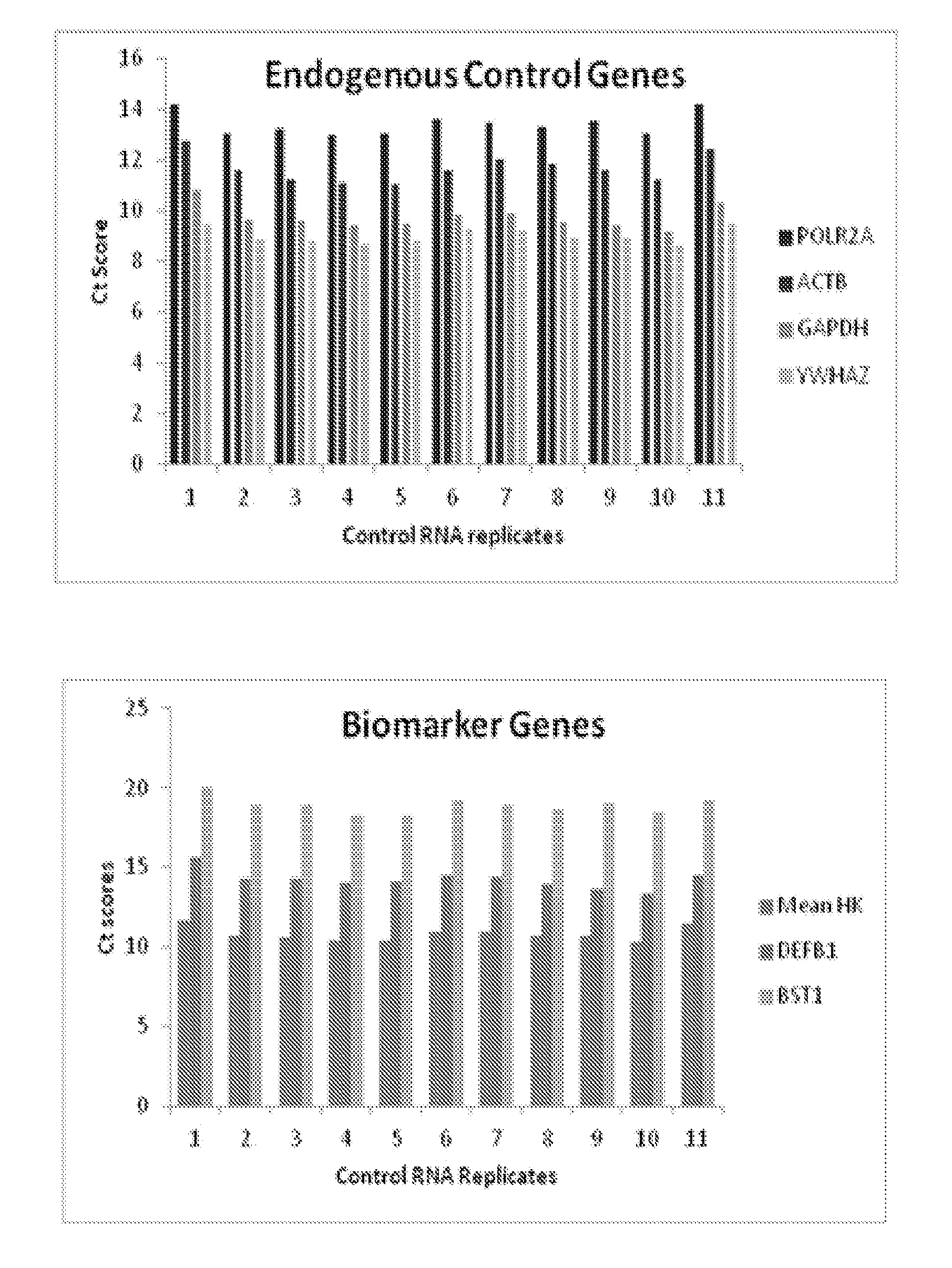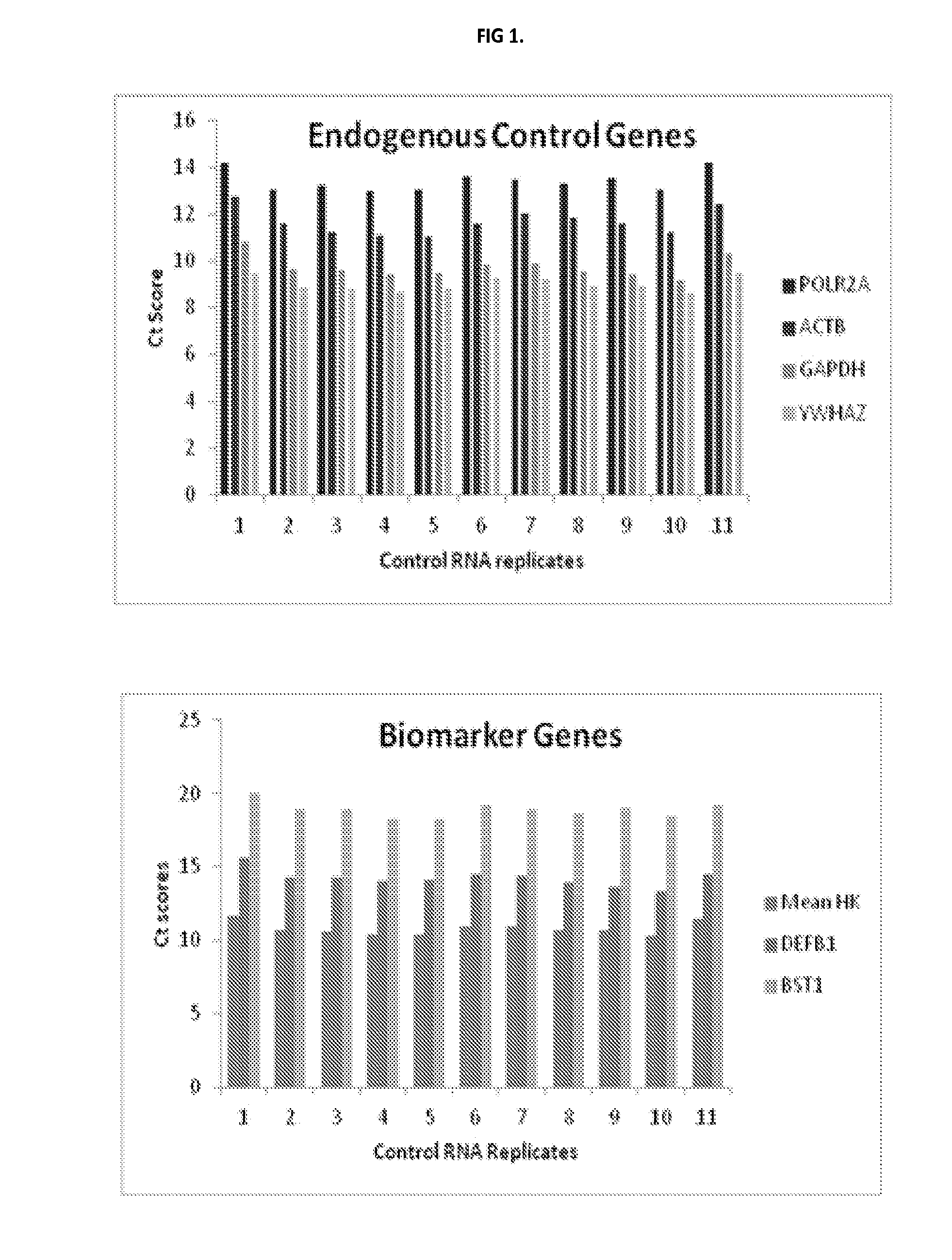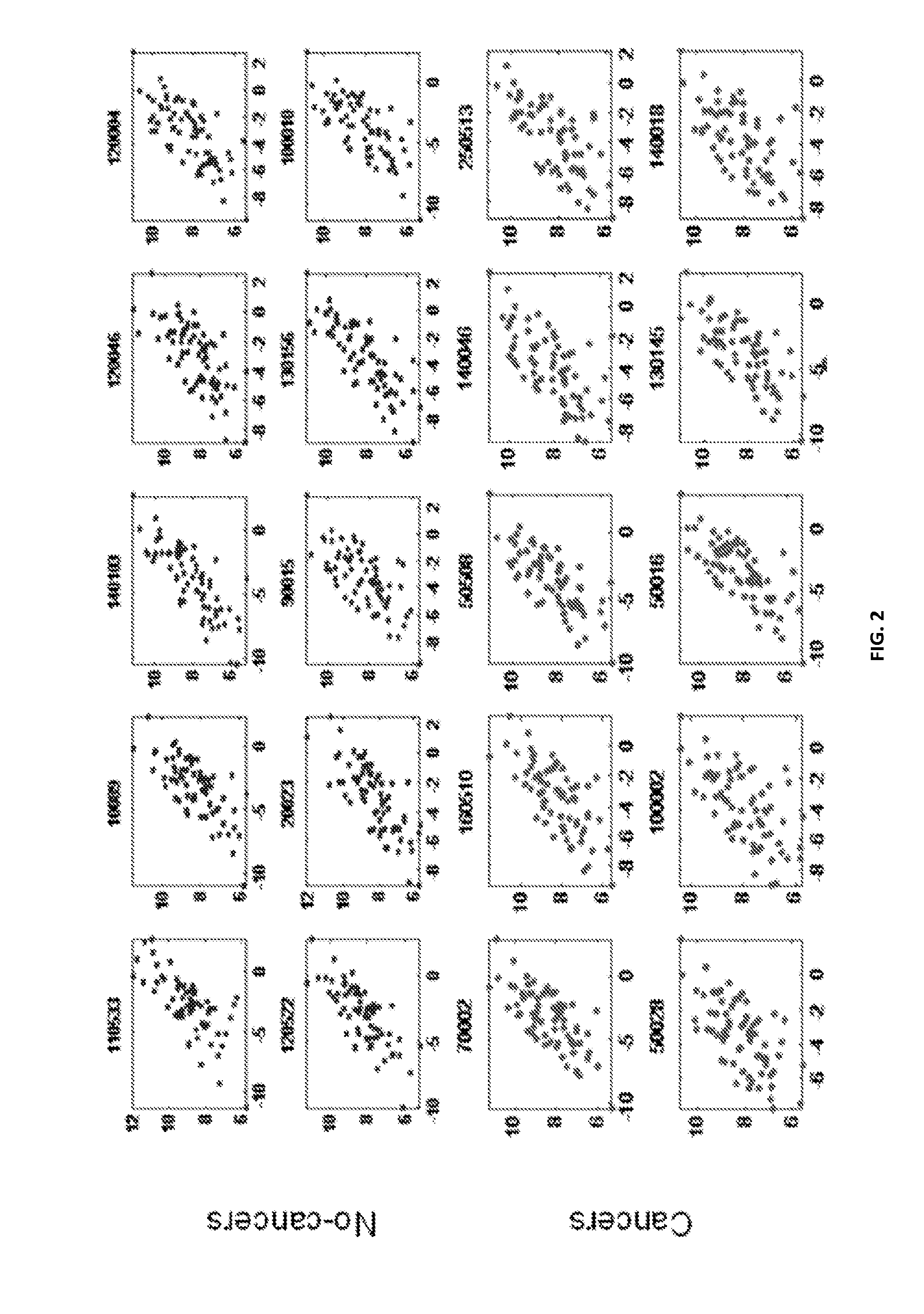Methods for evaluating lung cancer status
a technology of lung cancer and status, applied in the field of methods and compositions for assessing cancer risk using gene expression information, can solve problems such as difficulty in reaching by standard techniques such as bronchoscopy
- Summary
- Abstract
- Description
- Claims
- Application Information
AI Technical Summary
Benefits of technology
Problems solved by technology
Method used
Image
Examples
example 1
Airway Field of Injury Biomarkers
[0093]Introduction:
[0094]Applicants have conducted a study to identify airway field of injury biomarkers using RNA recovered from bronchial epithelial cells. Several hundred clinical samples were collected. The samples comprised histologically normal bronchial epithelial cells obtained from the mainstem bronchus during routine bronchoscopy. Subjects from which the samples were obtained were suspected of having lung cancer and were referred to a pulmonologist for bronchoscopy. A subset of the subjects were subsequently confirmed to have lung cancer by histological and pathological examination of cells taken from the lung either during bronchoscopy, or during some follow-up procedure. Another subset of subjects were found to be cancer free at the time of presentation to the pulmonologist and up to 12 months following that date.
[0095]The diagnosis of cancer, in all cases, was made by pathology from cells or tissue that were obtained either through bronc...
example 3
Biomarkers of Airway Field of Injury
[0118]Approximately 1000 specimens were collected for the development and validation of a diagnostic assay (an example of a BronchoGen assay). The specimens were from a mix of subjects with confirmed primary lung cancer, as well as a control group of subjects without lung cancer. Experiments to discover genes associated with airway field of injury were run using gene expression microarrays. An interim analysis exercise was run whereby the first 330 specimens were selected, and the total samples set was split into a training set and a test set, also based on enrollment date and independent of cancer status. The total development set consisted of 240 cancer patients and 90 normal patients (no-cancers). The training set consisted of 220 samples and the independent test set had 110 samples. Each set included samples from cancer patients and normal subjects (without cancer). The objective of the training / testing exercise was to determine a useful set o...
example 2
[0122]Custom TaqMan® Low-Density Arrays (TLDAs) have been developed for evaluating informative-genes that are associated airway field of injury. Each custom array comprises a 384-well micro fluidic card. The card permits up to 384 simultaneous real-time PCR reactions. Each card has 8 sample-loading ports, each connected to a set of 48 reaction wells. The reaction protocol involves pipetting a cDNA sample (pre-mixed with an enzyme containing Master Mix) into each sample-loading port and briefly centrifuging. The TLDAs utilize a real-time 5′nuclease fluorescence PCR assay (i.e., TaqMan). In the PCR step, the cDNA templates are amplified using informative-gene specific primers and a fluorescently-labeled hybridization probe.
[0123]The informative-genes evaluated in the TLDAs are selected from Table 9. The first 36 genes in Table 9 correspond to informative-genes that differentiate cancers from controls. The last 5 genes, namely ACTB, GAPDH, YWHAZ, POLR2A, and DDX3Y are control genes
[012...
PUM
| Property | Measurement | Unit |
|---|---|---|
| time | aaaaa | aaaaa |
| nucleic acid detection assay | aaaaa | aaaaa |
| composition | aaaaa | aaaaa |
Abstract
Description
Claims
Application Information
 Login to View More
Login to View More - R&D
- Intellectual Property
- Life Sciences
- Materials
- Tech Scout
- Unparalleled Data Quality
- Higher Quality Content
- 60% Fewer Hallucinations
Browse by: Latest US Patents, China's latest patents, Technical Efficacy Thesaurus, Application Domain, Technology Topic, Popular Technical Reports.
© 2025 PatSnap. All rights reserved.Legal|Privacy policy|Modern Slavery Act Transparency Statement|Sitemap|About US| Contact US: help@patsnap.com



